Practice Question - 25 (Chart) | 100 DILR Questions for CAT Preparation PDF Download
The Ministry of Home Affairs is analysing crimes committed by foreigners in different states and union territories (UT) of India. All cases refer to the ones registered against foreigners in 2016.
The number of cases - classified into three categories: IPC crimes, SLL crimes and other crimes - for nine states/UTs are shown in the figure below. These nine belong to the top ten states/UTs in terms of the total number of cases registered. The remaining state (among top ten) is West Bengal, where all the 520 cases registered were SLL crimes.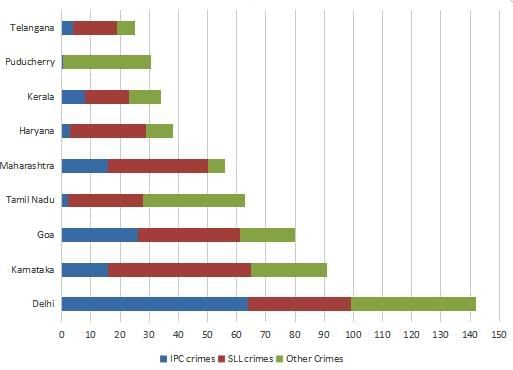
The table below shows the ranks of the ten states/UTs mentioned above among ALL states/UTs of India in terms of the number of cases registered in each of the three category of crimes. A state/UT is given rank r for a category of crimes if there are (r‐1) states/UTs having a larger number of cases registered in that category of crimes. For example, if two states have the same number of cases in a category, and exactly three other states/UTs have larger numbers of cases registered in the same category, then both the states are given rank 4 in that category. Missing ranks in the table are denoted by *.
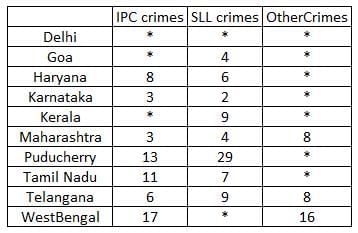
Q1: What is the rank of Kerala in the ‘IPC crimes’ category?
 View Answer
View Answer 
Ans: 5
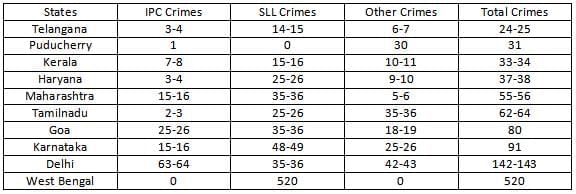
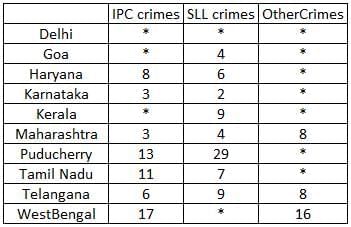
Rank of Delhi in IPC crimes category = 1, The rank of Karnataka and Maharashtra is 3(from table), then the rank of Goa can only be 2.
The rank of Telangana is 6 which has less |IPC crimes than Kerala, which means the rank of Kerala can be less than or equal to 5.
Now, there are two states with 3 ranks, so there will be no rank 4, there can only be rank 5 which is Kerala.
Q2: In the two states where the highest total number of cases are registered, the ratio of the total number of cases in IPC crimes to the total number in SLL crimes is closest to
(a) 3 : 2
(b) 19 : 20
(c) 11 : 10
(d) 1 : 9
 View Answer
View Answer 
Ans: (d)
The data can be tabulated as follows(approximately):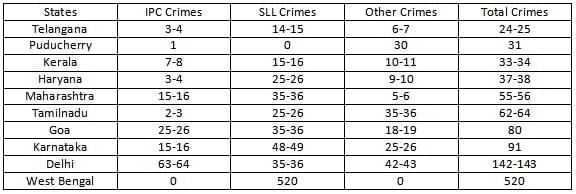
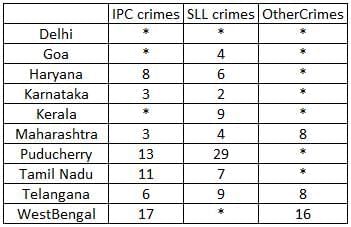 The highest cases are registered in West Bengal and Delhi.
The highest cases are registered in West Bengal and Delhi.
The total number of IPC crimes = 63-64
The total number of SLL crimes = 520+35-36 = 555-556
Hence the ratio = (63-64)/(555-556) = 0.11 (Approximately) = 1:9
Q3: Which of the following is DEFINITELY true about the ranks of states/UT in the ‘other crimes’ category?
(i) Tamil Nadu: 2
(ii) Puducherry: 3
(a) both (i) and (ii)
(b) only (ii)
(c) neither (i) , nor (ii)
(d) only (i)
 View Answer
View Answer 
Ans: (a)
The data can be tabulated as follows(approximately):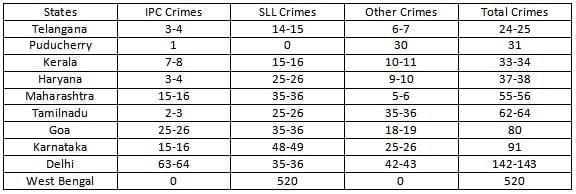
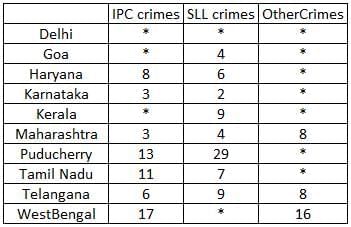
From the table, the rank of Tamilnadu in other crimes is 2. The states which are not in the table will have crimes less than Telangana(i.e 24-25)
From the table the rank of Pudducherry in other crimes is 3.
Q4: What is the sum of the ranks of Delhi in the three categories of crimes?
 View Answer
View Answer 
Ans: 5
The data can be tabulated as follows(approximately):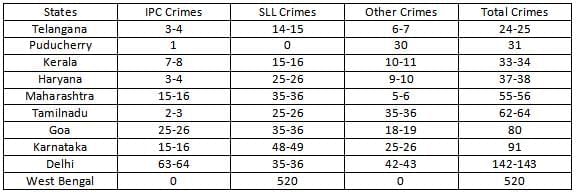
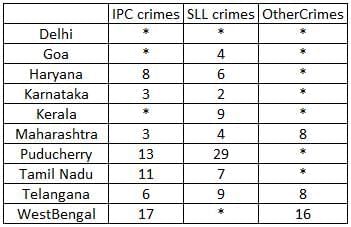 The rank of Delhi in IPC crimes should be 1 because the states which are not in table cannot crime more than that of Telangana which is 24-25.
The rank of Delhi in IPC crimes should be 1 because the states which are not in table cannot crime more than that of Telangana which is 24-25.
Similarly Delhi Rank in Other crimes will be 1.
Now in SLL crimes clearly West Bengal has rank 1. It is given that Karnataka has rank 2. The rank 3 can go to either Goa, Delhi and Maharashtra but Goa and Maharashtra already have rank 4. So Delhi will have rank 3. Also no state outside of the table can be ranked 3 in SLL crimes as maximum number of crime should be less than that of Telangana(24-25). Here the number of SLL crimes is 35-36.
Hence the sum of the ranks = 1+3+1=5
|
102 videos|123 docs|121 tests
|
FAQs on Practice Question - 25 (Chart) - 100 DILR Questions for CAT Preparation
| 1. What is the CAT exam and what is its significance for MBA aspirants? |  |
| 2. How is the CAT exam structured and what are the key sections? |  |
| 3. What is the eligibility criteria for appearing in the CAT exam? |  |
| 4. How should candidates prepare for the CAT exam effectively? |  |
| 5. What are some common mistakes to avoid while preparing for the CAT exam? |  |
















